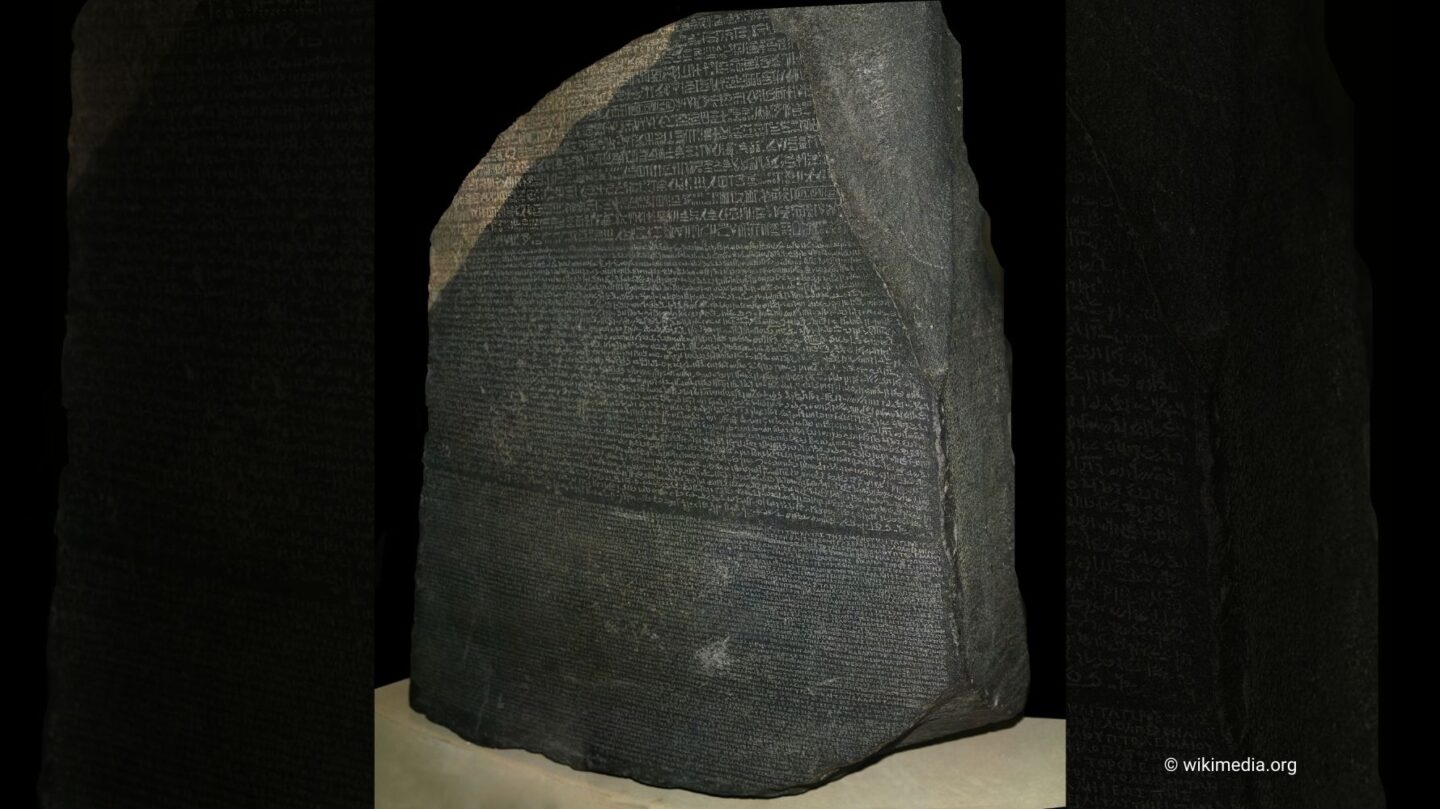A Remarkable Discovery
The Rosetta Stone, one of the most significant archaeological finds in history, was the key to unlocking the mysteries of ancient Egypt. Discovered in 1799 by French soldiers during Napoleon’s campaign in Egypt, the stone was unearthed near the town of Rosetta (modern-day Rashid). It was later seized by the British after Napoleon’s defeat and transferred to the British Museum, where it remains today.
This seemingly ordinary slab of stone held the key to understanding Egyptian hieroglyphs, a script that had been undecipherable for over a thousand years. Its discovery marked the beginning of a new era in Egyptology, enabling scholars to uncover the rich history and culture of one of humanity’s oldest civilizations.
What Is the Rosetta Stone?
The Rosetta Stone is a granodiorite slab measuring about 114 centimeters in height and weighing approximately 760 kilograms. What makes it extraordinary is the presence of three distinct scripts carved into its surface:
- Hieroglyphics: The formal script used for religious and monumental inscriptions.
- Demotic: The common script used for everyday purposes in ancient Egypt.
- Ancient Greek: The language of the ruling Ptolemaic dynasty at the time.
The text on the stone is a decree issued in 196 BCE during the reign of King Ptolemy V, honoring his achievements and consolidating his authority. While the content of the text itself is not groundbreaking, the inclusion of the same message in three scripts allowed scholars to compare the writings and decode Egyptian hieroglyphs.
The Challenge of Deciphering Hieroglyphs
Before the Rosetta Stone’s discovery, hieroglyphs were a mystery to scholars. For centuries, ancient Egypt’s language and writing system had been lost, leaving behind beautifully inscribed monuments and artifacts that could not be understood.
With the Rosetta Stone, scholars realized that the Greek text, which was already known, could serve as a translation for the other scripts. However, deciphering hieroglyphs was not straightforward, as they were far more complex than a simple alphabet.
Early efforts to decode the stone were made by scholars across Europe, but it was French linguist Jean-François Champollion who finally succeeded. By comparing the Greek and Demotic texts with the hieroglyphs, Champollion realized that the hieroglyphic script contained both symbolic and phonetic elements. In 1822, he announced his breakthrough, unlocking the meaning of ancient Egyptian writing and opening the door to Egypt’s history.
Revealing Ancient Egypt
Champollion’s decipherment of hieroglyphs allowed historians and archaeologists to finally understand the inscriptions on temples, tombs, and papyri. The rich tapestry of Egyptian civilization—its pharaohs, gods, rituals, and daily life—was revealed to the world. Texts such as the Book of the Dead, royal decrees, and personal correspondence could now be read, providing invaluable insights into ancient Egypt’s beliefs, governance, and culture.
The Rosetta Stone became a symbol of human curiosity and perseverance, illustrating how a single artifact could reshape our understanding of history.
The Legacy of the Rosetta Stone
Today, the Rosetta Stone remains a cornerstone of Egyptology and an enduring symbol of discovery. It not only unlocked the secrets of ancient Egypt but also demonstrated the power of language in connecting us to our past.
The stone’s story continues to inspire scholars, linguists, and historians, reminding us of the importance of preserving and studying our shared heritage. As new technologies and methods emerge, the lessons learned from the Rosetta Stone highlight the enduring quest to uncover the mysteries of human civilization.
A Window to the Past
The Rosetta Stone was more than just a piece of rock; it was a key that opened the door to an ancient world. Through its discovery and decipherment, humanity gained a deeper understanding of a civilization that shaped history. It stands as a testament to the brilliance of both ancient and modern minds, connecting us to a time long forgotten but never truly lost.
